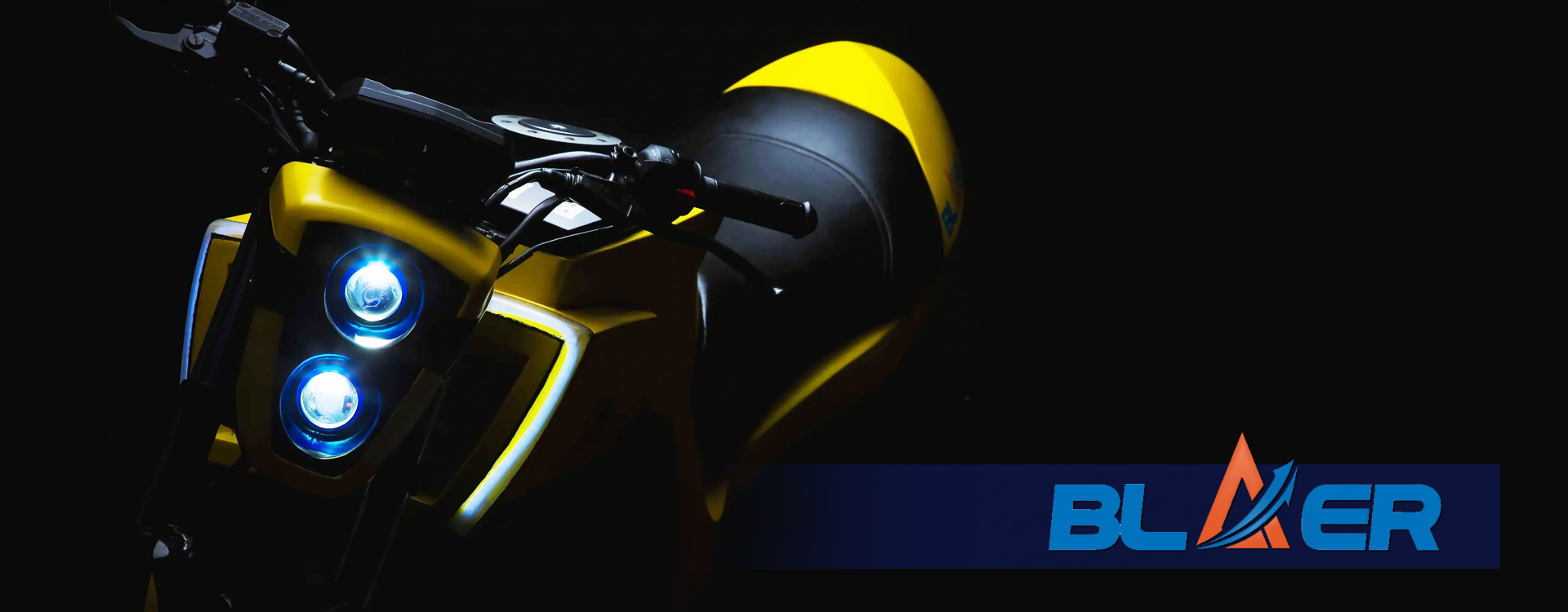Google puts up dismal results when searched for hybrid motorcycles or 2-wheelers whereas the list is exhaustive in the case of automobiles. With soaring prices of fuel and increasing pollution, though several companies have launched electric vehicles, its acceptance is yet nascent in India due to people’s apprehension regarding battery performance.
The two-wheeler market in India is devoid of hybrid technology that combines the benefits of fuel as well as electric. The motorcycles found are either fully electric or run on internal combustion engines but Blaer Motors is revolutionising the two-wheeler mobility space with its innovative hybrid technology .
Why did Blaer Motors start this startup?
Hybrid technology has largely been focussed on automobiles but none for the two-wheelers. According to the society of Indian Automobile Manufacturers & ICE 2016 360 survey, two-wheelers are used by 37% of metropolitan commuters to reach work and are owned by half the households in India’s bigger cities and developed rural areas.
The two-wheelers are the main drivers of causing two-thirds of pollution that release 30 percent of the particulate matter load which is 10 percent more than cars. Sensing this to be an opportunity, Blaer Motors was started by four college graduates – Abinesh Ekambaram, Ashwin Badri, Adarsh Lakshmann and Niranjan Kumar.
The idea for Blaer Motors initially began as a passion-driven final year project in 2013 but was founded officially in 2014 with initial funding and incubation support from their alma mater NIT-Trichy.
What did Blaer Motors Do Right ?
Their project on hybrid technology further intrigued them to delve deeper to develop eco-friendly fuel solutions in the two-wheeler vertical that gave birth to SPA (Secondary Power Assist). It is a plug-in hybrid technology whose similar kind has been implemented in Toyota Prius.
‘‘
The two-wheelers are the main drivers of causing two-thirds of pollution that release 30 percent of the particulate matter load which is 10 percent more than cars.
How Blaer Motor optimises the hybrid tech for Motorcycles?
The SPA technology has three components:
- Internal combustion engine (with a modified transmission)
- Electric motor
- BICS controller (Blaer Intelligent Control System).
As the powertrain starts, it activates the BICS controller which again activates the electric motor. The motor runs on electric mode till the first gear. For shifting into second gear or higher, the motor activates the hybrid mode with their patented drivetrain technology where both the engine and electric motor work together.
The advantage of the SPA system is that a vehicle can run either with an electric motor and internal combustion engine (ICE) in isolation or both synchronised in hybrid mode. The low-end torque offered by its electric motor ensures no knocking. While riding in hybrid mode if the battery charge depletes, BICS automatically switches to ICE thus no interruptions while riding.
The SPA technology of Blaer Motors improves the performance of a two-wheeler by enhancing fuel efficiency by 40 percent and reducing smoke emissions by 30 percent as compared to the petrol engine.
Pricing Matters
Blaer’s SPA hybrid system, when attached to the bike, adds 9kg which costs Rs 40,000. However, the price can go down to Rs 10000 if any original equipment manufacturer adopts the SPA system.
What is in it for the startups in the mobility space ?
Hybrid engine technology for two-wheelers is rare in India. To curb air pollution, the Supreme court has ordered a ban on BS (Bharat Stage) IV engine vehicles which are to be shifted to BS-VI to reduce emissions. However, this will impact the engine performance as well.
Therefore, the inclusion of hybrid technology in two-wheelers will reduce emissions without compromising on engine performance. Startups, such as Blaer Motors, in the mobility space offering sustainable and clean engine solutions in two-wheelers will be largely accepted in future.
However, one of the biggest challenges remains the cost factor, since most plug-in hybrids require Lithium-ion batteries which are imported in India. Though hybrid is in its infancy, to begin with, people perceive electrically driven vehicles to be weaker as compared to IC engine-driven ones. Therefore perception about hybrid-driven vehicles can be a hurdle.




